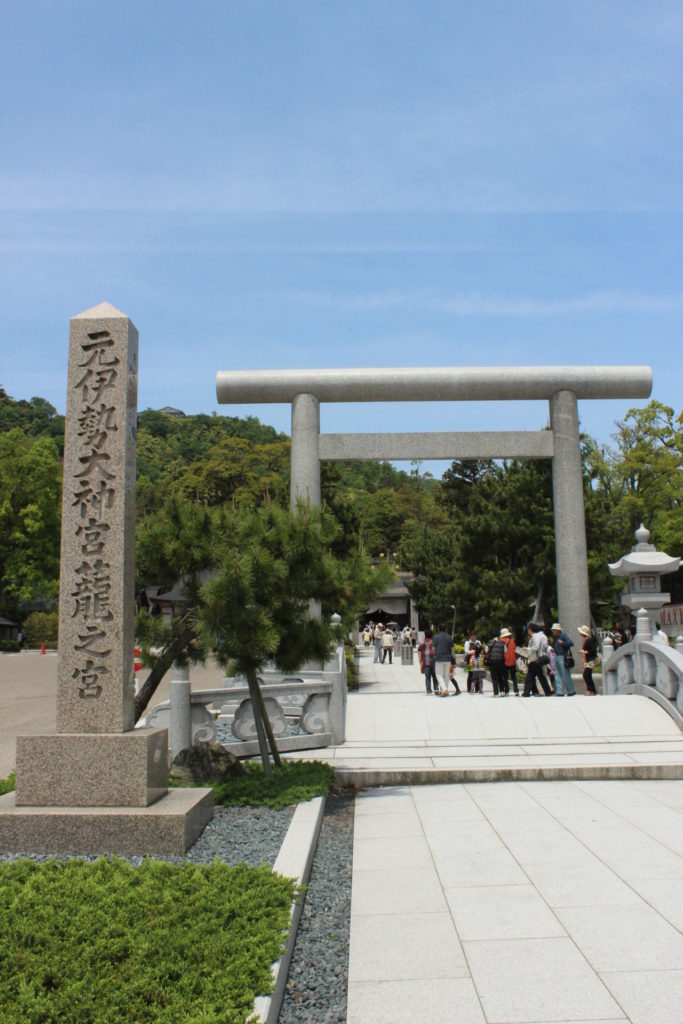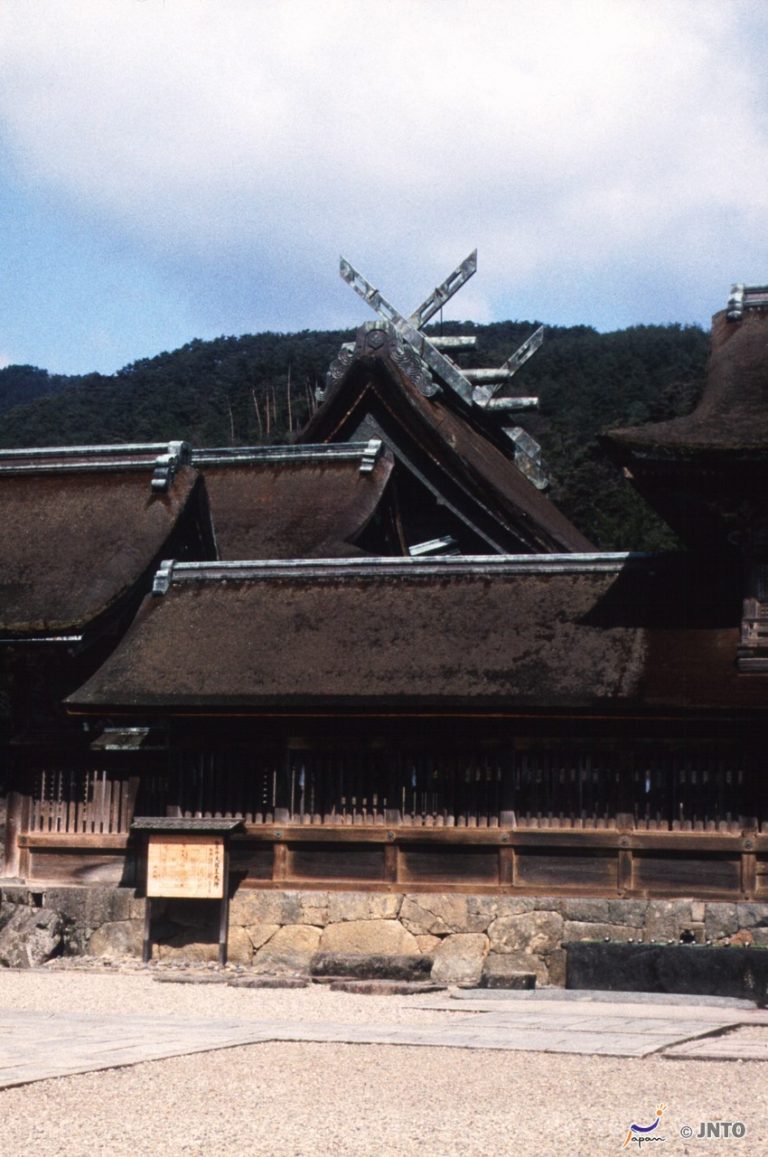
Types of Gods and “Komainu” Guardian Dogs
By K. Nishimura
According to Shinto belief, there are many kinds of gods in Japan such as those of work, love, marriage or health. In addition, shrines are constructed in various styles depending on the types of gods. Passing through the torii or gate of a shrine, there are two stone-carved guardian dogs called “komainu,” one on each side of the path up to the shrine. These guardian dogs are placed there as gatekeepers to prevent evil from intruding into the shrine from the outside world. This does not mean, however, that all shrines have these guardian dogs. Depending on the god, oxen, wolves, monkeys, foxes or other animals are placed at the shrine as gatekeepers sometimes together with komainu or messengers of the god. Moreover, because the gods of Japan are not omnipotent, it might be an idea to choose and visit the shrine where the god related to what you are praying for has been enshrined. For example, the god of learning is Sugawara no Michizane. Therefore, it is believed that praying to this god will improve one’s calligraphy or learning. Nowadays, this god is said to be helpful in successfully passing the entrance exam to the desired college or high school. This god is, for example, enshrined at Dazaifu Tenmangu in Fukuoka Prefecture or Kitano Tenmangu in Kyoto. These shrines have the statues of oxen as messengers of the god in addition to the komainu guardian dogs. This comes from some anecdotes regarding Michizane and oxen. Hiyoshi Taisha shine located at the foot of Mt. Hiei in Shiga Prefecture enshrines a mountain god. Because monkeys live on this mountain, there are several statues of monkeys as messengers of the god within the shrine premises.
Construction Styles of Shrines
The construction styles of shrines also vary. There are primitive-style shrines like Omiwa Shrine in Nara Prefecture that worships Mt. Miwa and has no shrine buildings. There are also taisha-zukuri style shrines like Izumo Taisha in Shimane Prefecture where a gracefully curved roof covers even the stairs ascending up to the main shrine building. On the other hand, shinmei-zukuri style shrines like Ise Shrine in Mie Prefecture has straight-line roofs with no curves. With the passage of time, people no longer worship at the Parthenon in Greece. However, there is an endless line of prayers at Ise Shrine even today, which is said to have a history of more than 2,000 years. From ancient times, the Ise Shrine has been rebuilt every 20 years performing an event called shikinen sengu (installing the deity in a new shrine). In this event, the shrine buildings and all of the items used by the god (sun goddess Amaterasu-omikami) from the clothes and accessories up to the harness for the horse are remade every 20 years. This is a culture transmission event, which is rare to find in the world, for handing down the building and decoration technologies to the next generation like a relay. This also shows the wonderful wisdom of the ancient people that set 20 years as the limit for passing down these traditional technologies. Since the previous shikinen sengu was in 1993, this important event will be held again next year.

How to Worship at Shrines
There is a dress code for properly worshipping at a shrine. Men must wear a jacket and necktie while women must wear corresponding appropriate attire. First, you bow before passing through the torii. Then, when walking up to the shrine, you must walk on the edge of the path because the center of the path is where the gods walk. Before the shrine, there is usually a place called the temizuya (washing-water spot) where you cleanse your hands and mouth.
This is done as follows:
① Holding the ladle in your right hand, take some water with the ladle and wash your left hand.
② Hold the ladle with your left hand and wash your right hand.
③ Hold the ladle with your right hand again and pour some water into the palm of your left hand and use that water to cleanse your mouth.
④ Wash your left hand again.
⑤ Stand the ladle up and wash the handle of the ladle.
⑥ Return the ladle to its original position. (※ If possible, all of these actions should be performed using one ladle of water.)
When you arrive at the shrine, you put money based on the value of your prayer in the offering box. You quietly place or drop the money in the box without throwing it in. For paper money, it is appropriate to first place it in an envelope. Generally, most offerings are from 100 to 500 yen. If you go inside the shrine building for a special prayer, you’ll need an offering of at least 5,000 yen (there is no upper limit). When you make a prayer before the shrine building, the order is as follows:
① Put a monetary offering in the box (when praying before the box) or hand an offering to the shrine (for special prayers).
② Bow your head twice.
③ Clap your hands twice and make your prayer. (Say your name and address before making your prayer.)
④ Finally, bow your head once in reverence.
These are the general procedures of worshipping at a shrine. After praying to the god of the shrine, people usually make an offering to the shrine again if their prayer was answered or they actually received the god’s help. In this way, the relationship between the Japanese and their gods has been cultivated during their long history, which is a relationship of “give and take” where people pray to a god, the god gives them power, and people visit the god again to offer their thanks.



0件のコメント